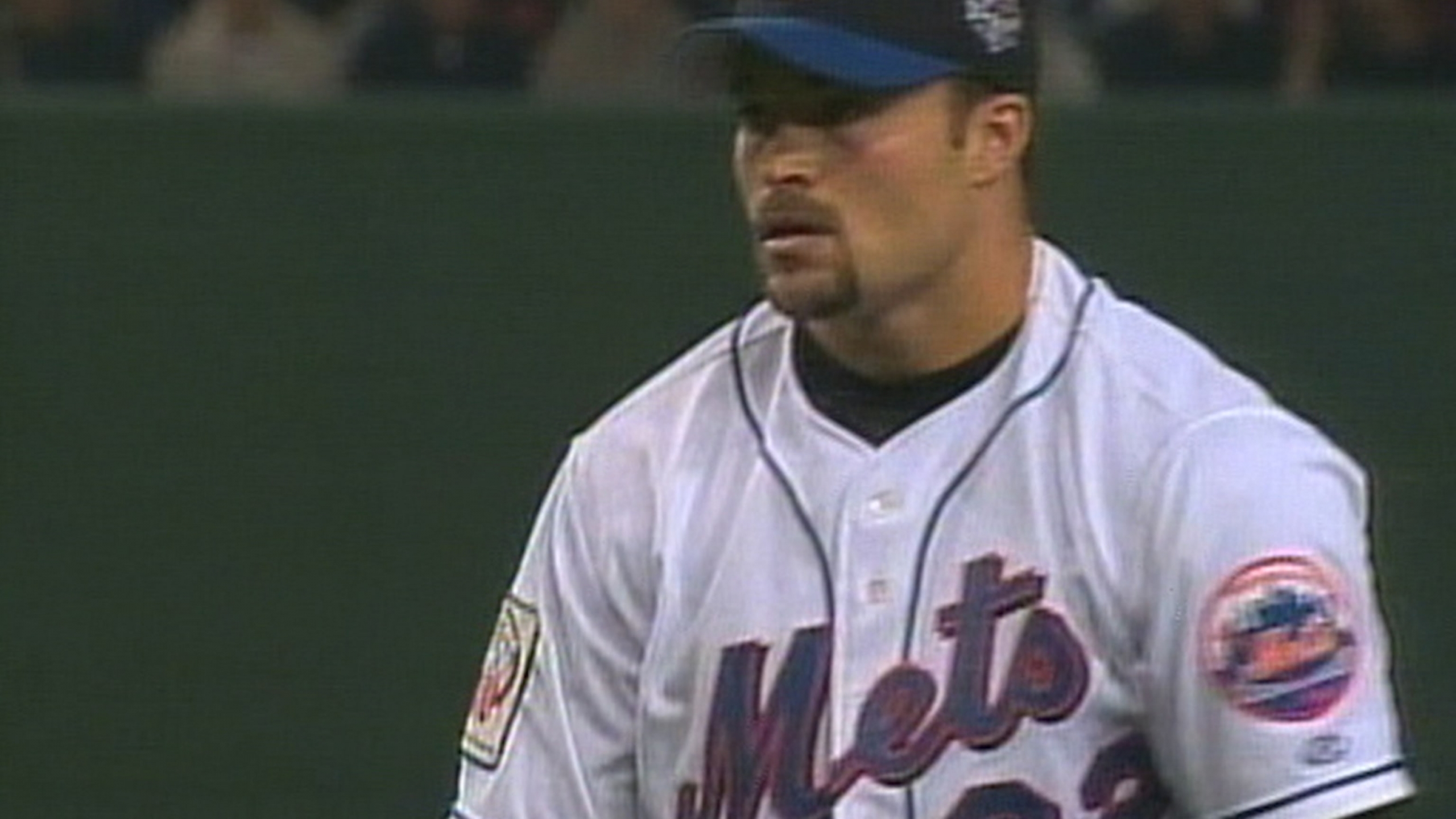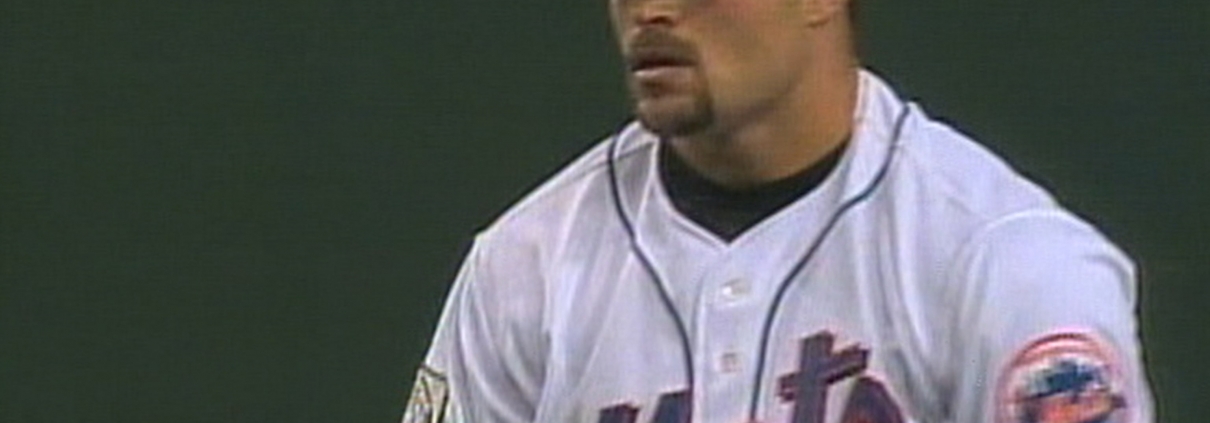March 29, 2000: Cubs top Mets in season opener at Japan’s Tokyo Dome
 The Chicago Cubs and New York Mets traveled halfway around the world to start the 2000 season — for the first-ever major-league games to take place outside of North America. The Mets had blazed trails four seasons earlier; their August 1996 series against the San Diego Padres in Monterrey, Mexico, was the first time for regular-season major-league baseball outside of the United States and Canada.
The Chicago Cubs and New York Mets traveled halfway around the world to start the 2000 season — for the first-ever major-league games to take place outside of North America. The Mets had blazed trails four seasons earlier; their August 1996 series against the San Diego Padres in Monterrey, Mexico, was the first time for regular-season major-league baseball outside of the United States and Canada.
Now, the Mets and Cubs traveled to Japan — where baseball is the national pastime — to open their season. They would each play exhibition games against Japanese teams before starting the season with a two-game series.
Many of the players were concerned about the 16-hour flight’s impact on the start of their season. Mets pitcher Mike Hampton told reporters, “Japan’s going to be a tough trip. I just hope everybody adapts all right and gets through it. It’s going to be exciting to go over there and play, but it’s going to be tough. It could take its toll. Hopefully, the effects aren’t too severe and it doesn’t affect us the first week or two weeks.”1
Several members of both teams had spent time on Japanese teams in the past, most notably Mets manager Bobby Valentine. He had managed the Chiba Lotte Marines to a second-place finish in Nippon Professional Baseball’s Pacific League in 1995. When he was released after the season, he returned to the United States to become the Mets manager.
Pat Mahomes of the Mets pitched for the Yokohama BayStars in 1997 and 1998. Cubs pitcher Brian Williams spent a year with the Fukuoka Daiei Hawks in 1998 and Cubs outfielder Damon Buford lived there when his father, Don, played for the Taiheiyo Club Lions from 1973 to 1975 and the Nankai Hawks in 1976.
The unusual season opener on March 29 drew 55,000 fans to the Tokyo Dome. As the two teams warmed up, “a sumo wrestler waddled to his seat and Crown Prince Naruhito sat in the Royal Box. Fans snacked on sushi with chopsticks, and some even wore surgical masks (since it was high pollen season).” In an Opening Day salute to both teams, “five women in colorful kimonos presented flowers to both teams and the umpires.”2 The only thing missing was the drums and horns that usually add noise to Japanese games.
The Mets were chosen to be the home team for the first game. Hampton, who had arrived in a five-player trade with the Houston Astros three months earlier, started for the Mets. The left-hander tried to take the unique playing environment in stride, saying “It’s baseball, whether we play in the US or Japan. The field is the same. We’ll be playing a talented Cubs team. I’m looking forward to the challenge.”3
Hampton, who led the National League with 22 wins in 1999, started shakily. His first pitch to Eric Young Sr. — delivered shortly after 7 P.M. Tokyo time, which was 5 A.M. in New York City — was a strike, but he missed with the next four pitches for a walk.4 Young stole second three pitches later. Buford’s single brought Young home, giving the Cubs the lead before Hampton could get the first out. Although Hampton struggled with his control, hitting the next batter, Mark Grace, he was able to get through the inning with no further damage when Sammy Sosa grounded into a double play and Henry Rodriguez flied out.
Hampton’s control continued to elude him in the next three innings. He walked another batter in the second and three straight in the third. But the third-inning walks came with two outs and he was able to keep the Cubs from scoring when Rodriguez popped out to the shortstop.
Hampton worked out of trouble again in the fourth when he surrendered two leadoff singles and threw a wild pitch that left two runners in scoring position to start the frame. Another walk loaded the bases. But a strikeout, Hampton’s first of the game, and another double play kept the Cubs from increasing their lead.
For Chicago, Jon Lieber opposed Hampton. The southpaw had a 10-11 record in 1999, his first season with the Cubs after a trade with the Pittsburgh Pirates. Lieber pitched as though he wanted 2000 to bring him a change in his luck. He allowed the Mets just one run and five hits over seven innings. That run came in the third when Rey Ordoñez led off with a single and moved to second on Hampton’s sacrifice. Ordoñez reached third on Rickey Henderson’s single and came home on Darryl Hamilton’s sacrifice fly to tie the game.
The Mets had some difficulty with traction in the batter’s box. Robin Ventura grounded out in the second but got stuck in the soft dirt outside in the basepath and almost injured himself. Hamilton looked as if he might be sinking into the batter’s-box dirt when he grounded out in the fifth.
Stadium officials could not seem to remedy the problem. “They pounded and pounded it. But the problem is that they don’t have any clay. Guys start digging and sinking and end up hitting uphill. That changes the angle of the swing. I’d rather guys hit off a mat,” said Don Baylor, debuting as Cubs manager.5
As Lieber shut down the Mets, Hampton continued to struggle. The Cubs regained the lead in the fifth. Buford led off with a single. Two walks loaded the bases and a third walk, Hampton’s ninth of the game, sent Buford across the plate to give the Cubs the lead, 2-1.
Turk Wendell replaced Hampton in the sixth. Wendell struggled to get through the inning. Joe Girardi led off with a single and moved to second on a sacrifice. When Wendell walked Buford, Valentine pulled the plug on him and brought in Dennis Cook.
Cook got the final out of the sixth but the Cubs got the better of him in the seventh. Sosa led off with a single. Two batters later, Shane Andrews hit a homer over the left-field wall to give the Cubs a three-run lead. With Rich Rodriguez on the mound in the eighth, Grace hit his first home run of the season and the Cubs were up 5-1.
Baylor replaced Lieber with Brian Williams in the eighth. Williams walked Edgardo Alfonzo to start the frame. Then Mike Piazza worked the count full before sending ball over the right-field wall. His 450-foot blast brought the Mets to within two runs at 5-3. Williams regrouped and shut down the Mets, getting the next three batters out on groundouts.
Former Met Rick Aguilera took over mound duties in the ninth to close out the game for Chicago. Baylor also made a defensive replacement, putting Jeff Huson in at shortstop in place of Jose Nieves. But when Valentine looked at his lineup card, he couldn’t find Huson on it. After checking with his coaches, Valentine headed out to home plate to question the change.
Valentine asked home-plate umpire Randy Marsh about the change; Baylor noted that he had submitted a lineup card with backup catcher Jeff Reed’s name listed twice. Baylor, according to Valentine, also told the home-plate umpire that Jose Molina was not on the roster. The game continued.
As Aguilera worked toward a save, Valentine checked with his general manager and learned that Molina was on the roster. In other words, the Cubs had 26 players on their 25-man roster. With two outs and Matt Franco at the plate, Valentine “waited until Aguilera had a 1-and-2 count before protesting the game.” He said later, “I didn’t want to protest this silly thing. I figured better be safe than sorry.”6
Aguilera was clearly annoyed by Valentine’s move and began to walk toward home but Girardi settled him back down. “Bobby was trying to distract the pitcher, which was probably the right thing to do,” Baylor said later. “You have to understand Bobby, which I try to do.”7 But Aguilera, a 38-year-old veteran in his 16th major-league season, regained his composure and struck out Franco on the next pitch to give the Cubs the win.
Valentine defended his gamesmanship afterward, saying, “I really didn’t want to do that, believe me. But a game is a major investment for a team and a win is a win and if they were playing with 26 men we had to file a protest. I just waited until there were two outs and figured I’d better protect my interests. Better to be safe than sorry and research it after the game.”8
The Mets manager did not spend much time contemplating his actions. He rescinded the protest immediately after the game and then met with Crown Prince Naruhito in the royal box. Mets general manager Steve Phillips could only say of the game, “High drama in Metsville.”9 New York earned a split of the series a day later, when Benny Agbayani’s pinch-hit grand slam broke an 11th-inning tie and lifted the Mets to a 5-1 win.
Sources
In addition to the sources cited in the Notes, I used the Baseball-Reference.com and Retrosheet.org websites for box-score, player, team, and season pages, pitching and batting logs, and other pertinent material.
https://www.baseball-reference.com/boxes/NYN/NYN200003290.shtml
https://www.retrosheet.org/boxesetc/2000/B03290NYN2000.htm
Notes
1 Tyler Kepner, “The Mets Begin Their Journey as Time Travelers,” New York Times, March 24, 2000: D4
2 Associated Press, “Cubs Beat Mets, 5-3, IrontonTribune.com, March 29, 2000.
3 George Vescey, “Mets-Cubs Game in Japan Will Be an Unusual Eye-Opener,” New York Times, March 28, 2000: D3.
4 Rafael Hermoso, “Hampton Debut No Walk in the Park, New York Daily News, March 30, 2000: 84.
5 Teddy Greenstein, “Right Out of the Box a Problem — No Clay,” Chicago Tribune, March 30, 2000: 49.
6 Hermoso.
7 Teddy Greenstein, “It’s Not Valentine’s Day — Protest Proves Meaningless,” Chicago Tribune, March 30, 2000: 49.
8 Greenstein.
9 Lisa Olson, “Tokyo Woes for Bobby,” New York Daily News, March 30, 2000: 82.
Additional Stats
Corrections? Additions?
If you can help us improve this game story, contact us.


